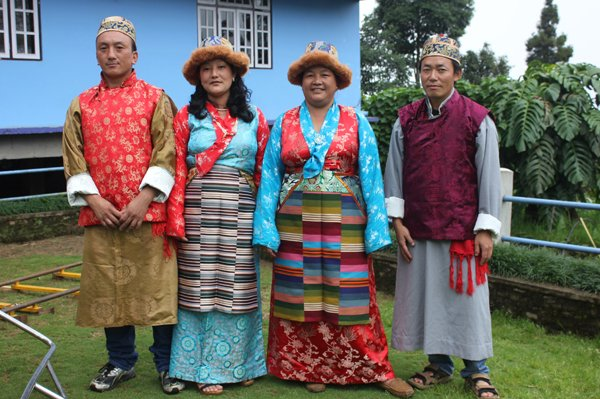
Nestled in the northeastern corner of India, bordered by Bhutan, Nepal, and Tibet, lies the enchanting state of Sikkim. Renowned for its breathtaking landscapes, including the majestic peaks of the Himalayas and lush valleys carpeted with rhododendrons, Sikkim is also home to a rich and diverse cultural tapestry that reflects the region's unique history and heritage. From colorful festivals and traditional dances to ancient customs and religious practices, Sikkim's culture is a vibrant mosaic of diversity and harmony.
At the heart of Sikkim's cultural identity lies its rich tapestry of indigenous traditions and customs, which have been preserved and passed down through generations. The state is home to several indigenous communities, including the Lepchas, Bhutias, and Nepalese, each with its own distinct language, dress, and customs. Despite their differences, these communities coexist harmoniously, contributing to the rich cultural fabric of the region.
One of the most striking aspects of Sikkim's culture is its religious diversity, with Buddhism, Hinduism, and indigenous belief systems coexisting side by side. Buddhism, in particular, has played a significant role in shaping Sikkim's cultural landscape, with numerous monasteries and stupas dotting the landscape. The Rumtek Monastery, perched atop a hill overlooking Gangtok, serves as the seat of the Karmapa, the head of the Kagyu sect of Tibetan Buddhism, and is a center of religious and cultural activities.
Festivals form an integral part of Sikkim's cultural calendar, providing an opportunity for communities to come together and celebrate their shared heritage. The Losar festival, celebrated by the Tibetan community, marks the Tibetan New Year and is characterized by colorful processions, traditional dances, and rituals. Similarly, the Bumchu festival, celebrated by the Lepcha community, is a time for feasting, singing, and dancing, as well as the ceremonial opening of the sacred Bumchu vase.
Traditional music and dance play a central role in Sikkim's cultural expression, with each community boasting its own repertoire of songs and dances. The Yak dance, performed by the Bhutia community, mimics the movements of the yak, while the Pangtoed dance, performed by the Lepcha community, is a lively celebration of harvest and fertility. These dances are often accompanied by traditional musical instruments such as the damru, flute, and cymbals, adding to the festive atmosphere.
In recent years, efforts have been made to promote and preserve Sikkim's cultural heritage through initiatives aimed at documenting traditional practices, reviving endangered art forms, and promoting cultural exchange. Organizations such as the Sikkim Academy of Fine Arts and Literature (SAFAL) play a vital role in supporting local artists and artisans and providing them with opportunities to showcase their work on regional and international platforms.
In essence, Sikkim's culture is a testament to the region's rich history, natural beauty, and spirit of unity in diversity. As the state continues to embrace the challenges of the modern world while staying true to its cultural roots, its vibrant traditions and customs serve as a source of pride and inspiration for generations to come.



